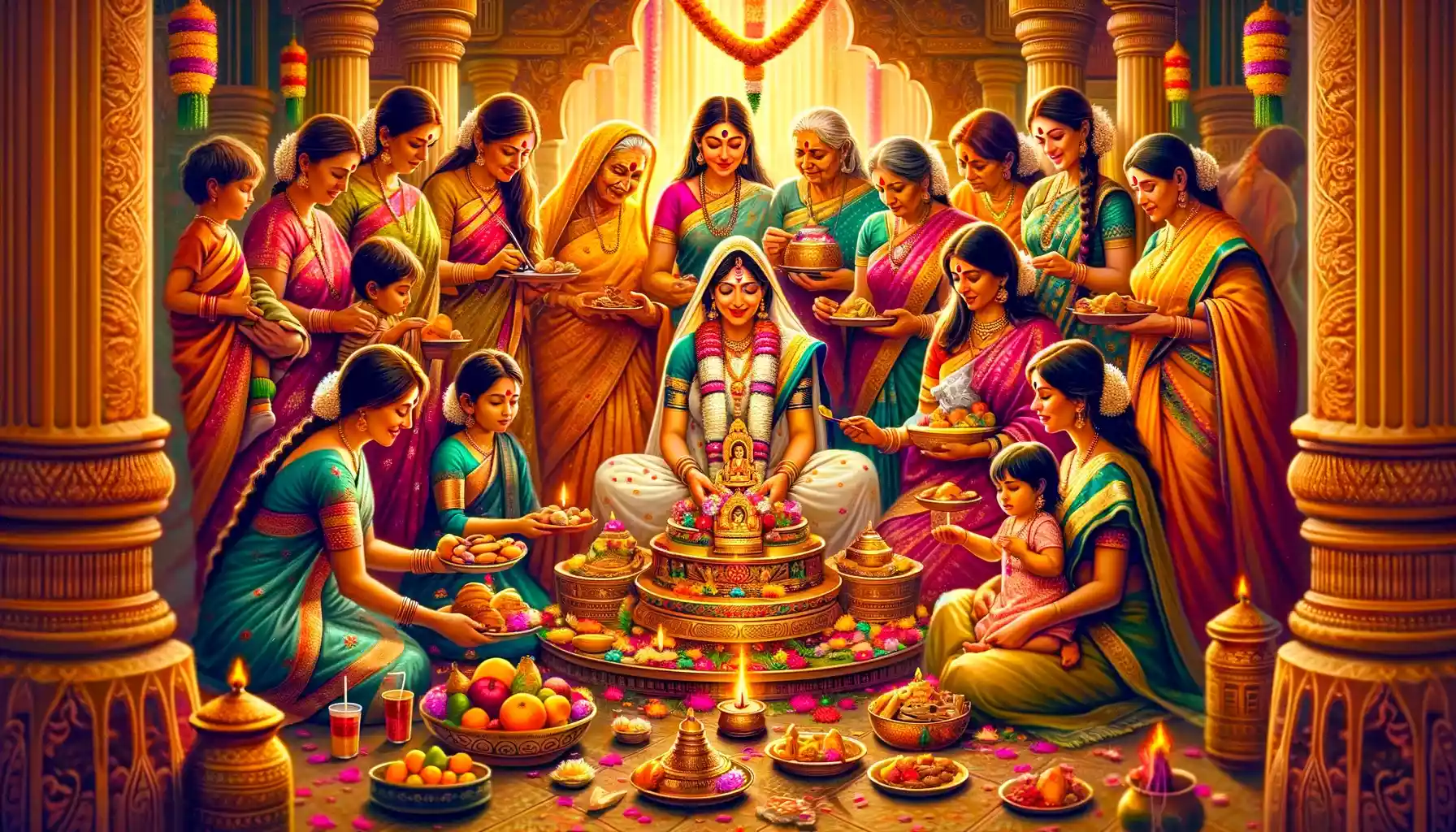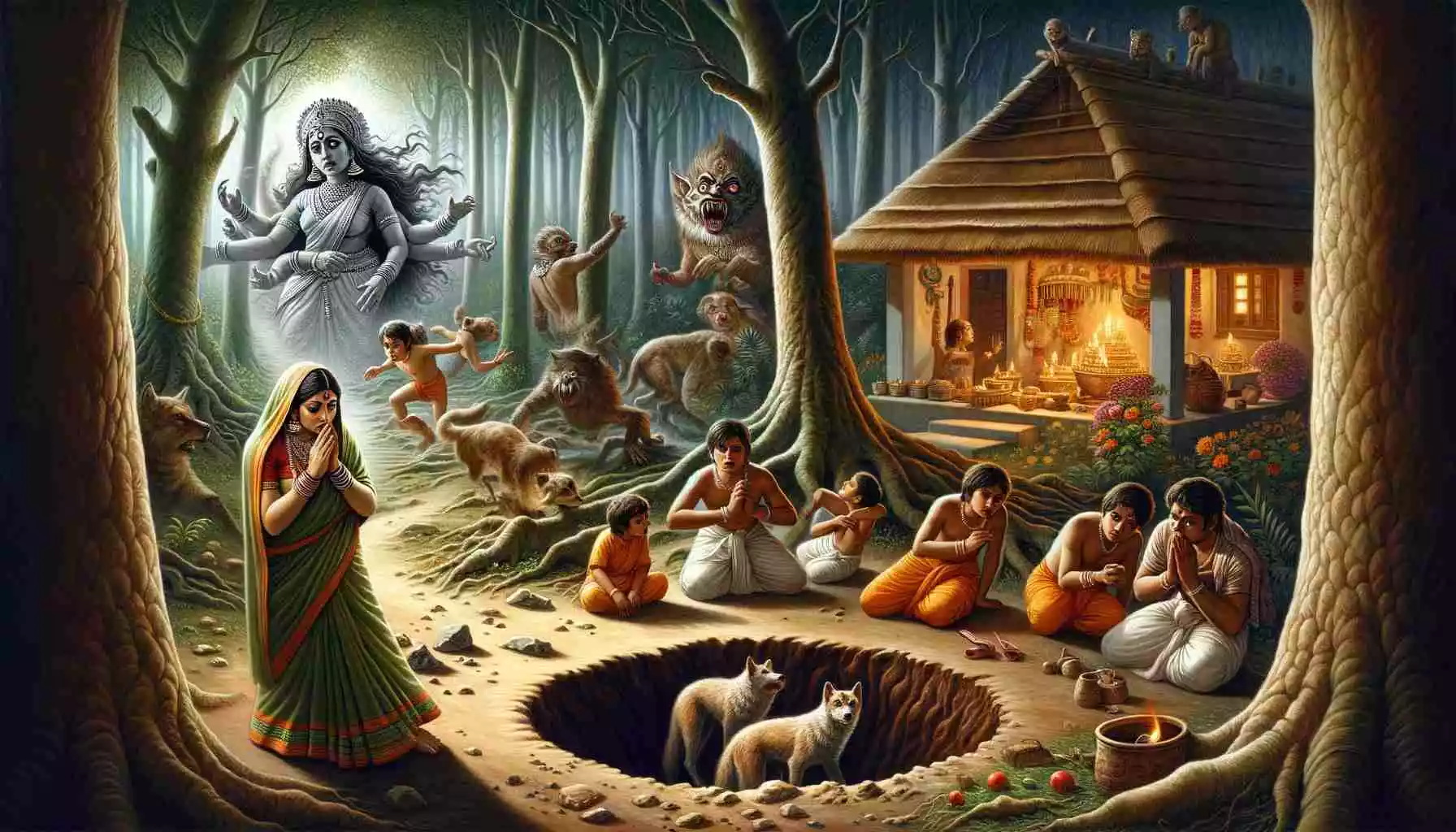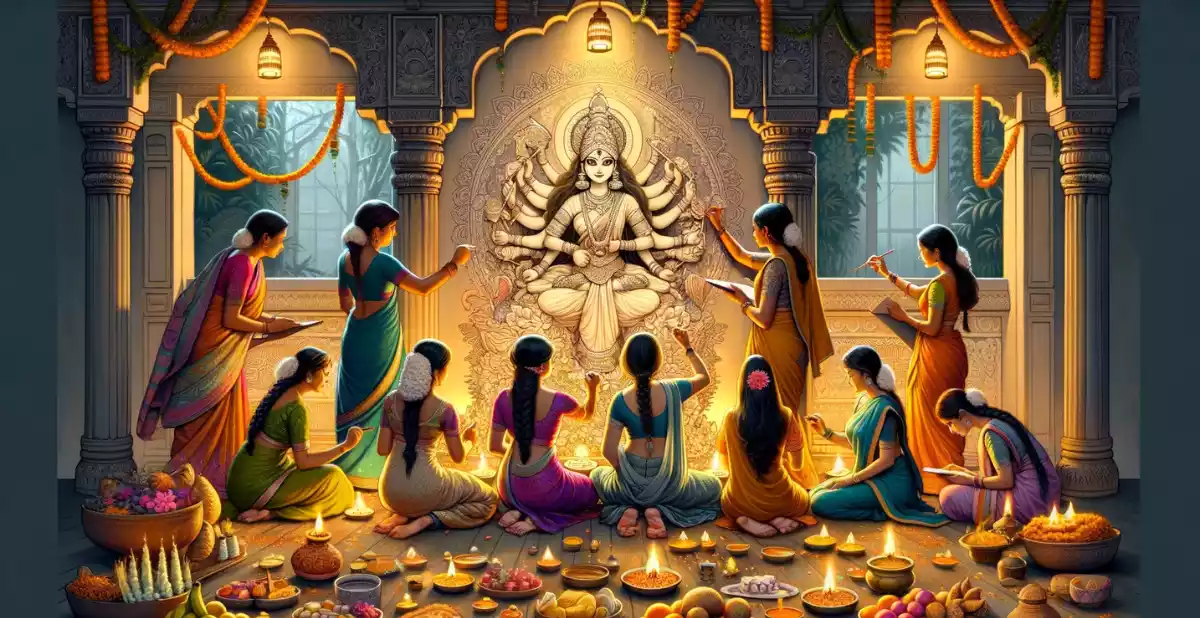Ahoi Ashtami: A Blend of Devotion and Motherly Love
Ahoi Ashtami, a significant festival in the Hindu calendar, is celebrated with great fervor, primarily by mothers for the well-being of their children. This festival is observed on the eighth day of the Krishna Paksha (waning phase of moon) in the month of Kartik, which falls eight days before Diwali.
The Harmonic Confluence of Traditions
Ahoi Ashtami is not just a religious observance, but a rich tapestry of cultural traditions that reinforces the familial bonds, especially the tender bond between a mother and her children. The festival reflects the profound concept of selfless love, care, and the enduring hope for a prosperous and healthy life for one’s children.
The vibrant rituals, the heartwarming stories narrated as part of the Vrat Katha, and the community gatherings for the Puja, all contribute to the cultural richness and the communal harmony that epitomizes Ahoi Ashtami.

Ahoi Ashtami Ki Kahani
The tale behind Ahoi Ashtami revolves around a woman and her seven sons. Below is a summary of the story based on two different sources:
| Element | Description |
| Characters | A woman and her seven sons |
| Setting | A village near a dense forest during the month of Kartik, a few days before Diwali festivities. |
| Incident | The woman decided to repair and decorate her house for the upcoming Diwali celebration. During this time, an unfortunate incident occurred where a child of a Syahu (a type of animal) was killed accidentally while the daughters-in-law were digging soil in a forest. |
| Consequence | The mother Syahu was angered and cursed the woman’s family, leading to hardship and the imprisonment of her seven sons. |
| Resolution | The woman observed a fast and prayed to Ahoi Mata for the well-being and release of her sons. Her prayers were answered, and her sons were released, establishing the tradition of Ahoi Ashtami Vrat (fast). |

The narrative of Ahoi Ashtami reflects the enduring maternal love and the power of faith and prayers. The accidental killing of Syahu’s child led to a curse on the woman’s family, causing her sons to be imprisoned. Distressed, the woman sought divine intervention by observing a fast and praying to Ahoi Mata for her sons’ wellbeing and release.
Her sincere prayers were answered, marking the inception of the tradition of observing a fast on Ahoi Ashtami. This tale underscores the essence of motherhood, the potency of sincere prayers, and the benevolence of Ahoi Mata. Through the veil of a simple yet profound narrative, the story of Ahoi Ashtami encapsulates the essence of maternal love, faith, and the divine grace that watches over earnest prayers.
Significance and Rituals
The heart of this celebration is the veneration of Ahoi Mata, the divine mother. Women, particularly mothers, rise early in the day, and after taking a vow (Sankalp) for the fast, they engage in the rituals. A unique aspect of this festival is the Puja (prayer ceremony), where devotees offer Arghya (offerings) to the stars or the moon in the evening. The day is filled with prayers, and the air reverberates with the recitation of the soul-stirring Ahoi Ashtami Katha, a narrative that underscores the essence of this fast.
During the festival, it is customary for devotees to clean their homes, and keep an idol or image of Goddess Hedgehog. The women also adorn themselves with a necklace that has an idol of Goddess Syahu. A significant ritual of the day is to donate to the underprivileged, manifesting the spirit of compassion and sharing that characterizes this festival.
The culmination of the fast is marked by the sighting of stars in the evening, or the moon, which is a symbolic representation of the divine mother’s blessings. The exact time for sighting the stars on November 5, 2023, is at 05:34 PM, and the moonrise on Ahoi Ashtami is at 11:43 PM.

Ahoi Ashtami Vrat Vidhi
The ritual of observing the Ahoi Ashtami fast (vrat) is deeply ingrained in the Hindu culture, particularly among mothers who seek the divine blessings of Ahoi Mata for the well-being of their children. Below is an outline of the ritualistic procedures traditionally followed during Ahoi Ashtami:

Preparations:
Sankalp (Pledge):
On the morning of Ahoi Ashtami, after taking a bath, women take a pledge (Sankalp) to observe the fast for the well-being of their children. The fast is to be observed without consuming any food or water, and it’s to be broken after sighting the stars or the moon, depending on family traditions.
Puja Preparations:
Before sunset (during Sayankal), preparations for the Puja (prayer ceremony) should be made. This includes drawing the image of Goddess Ahoi on the wall, which should have eight corners (Ashtha Koshthak) due to the festival’s association with Ashtami Tithi. Images of Sei (hedgehog and its children) from the Ahoi Ashtami legend should also be drawn near the Goddess. If drawing on the wall is not feasible, a large wallpaper of Ahoi Ashtami Puja can be used.
The place of worship is sanctified with holy water, and wheat is spread on the floor or on a wooden stool, upon which a water-filled Kalash (pot) is kept. The Kalash should be covered with an earthen lid, and a smaller earthen pot (Karwa) is kept on top of the Kalash, filled with water, and covered with its lid. The nozzle of the Karwa is blocked with shoots of grass, commonly known as Sarai Seenka, or cotton buds if the grass shoots are not available.
The food items used in Puja include 8 Puri, 8 Pua, and Halwa, which are later given to an elderly lady in the family or a Brahmin, along with some money.
Fasting Procedure:
Observing the Fast:
Those who observe the fast maintain celibacy, rise early and make a Sankalp (pledge) to perform the fast sincerely. Couples wishing to conceive are advised to take a dip in the Radha Kund in Mathura during sunrise and pray to the Kushmanda form of Maa Durga while observing the day-long fast.
Only married women, including those without children but hoping to conceive, traditionally observe this fast, during which they avoid touching mud or sand3.
Puja (Prayer Ceremony):
Ahoi Mata Puja:
The best time to perform the Puja is during Sandhya time, just after sunset. During the Puja, Ahoi Mata is worshipped with all rituals, usually alongside other female members of the family. Women narrate the story of Ahoi Mata, and offerings are made, including seven grass shoots and Halwa to Sei, along with the regular Puja offerings.
Ahoi Ashtami is a beautiful blend of rituals and traditions aimed at invoking divine blessings for the prosperity and longevity of one’s children. Through a series of well-structured rituals, the day reverberates with chants and prayers rising to the heavens, seeking a life of fulfilment and well-being for the younger generation.

Ahoi ashtami ki aarti | Ahoi ashtami aarti in hindi
अहोई अष्टमी की आरती
जय अहोई माता जय अहोई माता ।
तुमको निसदिन ध्यावत हरी विष्णु धाता ।।
ब्रम्हाणी रुद्राणी कमला तू ही है जग दाता ।
जो कोई तुमको ध्यावत नित मंगल पाता ।।
तू ही है पाताल बसंती तू ही है सुख दाता ।
कर्म प्रभाव प्रकाशक जगनिधि से त्राता ।।
जिस घर थारो वास वही में गुण आता ।
कर न सके सोई कर ले मन नहीं घबराता ।।
तुम बिन सुख न होवे पुत्र न कोई पता ।
खान पान का वैभव तुम बिन नहीं आता ।।
शुभ गुण सुन्दर युक्ता क्षीर निधि जाता ।
रतन चतुर्दश तोंकू कोई नहीं पाता ।।
श्री अहोई माँ की आरती जो कोई गाता ।
उर उमंग अति उपजे पाप उतर जाता ।।
Ahoi Ashtami 2023 Canada
| Aspect | Detail |
| Tithi Start | 03:29 PM, November 4, 2023 |
| Tithi End | 04:48 PM, November 5, 2023 |
| Location | Toronto, Ontario, Canada |
| Note | Timings are in local time of Toronto1 |
Ahoi Ashtami Puja Samagri
Below is a generic table of Puja Samagri (ritual items) based on common Hindu ritual practices and the snippets provided. Note that the specific items and their quantities might vary based on regional practices and individual preferences:
| Item | Description |
| Picture/Idol | A picture or idol of Ahoi Mata |
| Kalash | A pot filled with water, usually made of brass or copper |
| Coconut | Placed on top of the Kalash |
| Roli | A red powder is used for making the tilak (mark on the forehead) |
| Sacred Thread | A thread symbolizing protection, usually tied around the wrist |
| Flowers | Offered to the deity |
| Incense Sticks | To create a serene and fragrant environment during the Puja |
| Lamp | A traditional oil lamp, lit during the Puja |
| Offerings | Sweets, fruits, and other food items prepared for the occasion |
| Ahoi Ashtami Story | A book or printout of the Ahoi Ashtami story to be read or narrated during the Puja |
Please ensure to consult a knowledgeable person or a priest in your local Hindu community or temple for a precise and tailored list of Puja Samagri for Ahoi Ashtami.